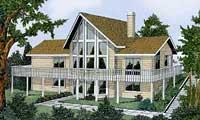The Hurd and the Oorns

The Hurd is unique and atypical as far as creatures go. Let’s start by describing its birth. Benevolent mammalian animals seek out virgin land and start to burrow and hack and dig a fairly large nesting space. These mammals then bring the bones of the Hurd and connect them. This is followed by cartilage, muscle tissue, skin, circulatory and respiratory systems and the Hurd is finally dressed with a variety of adornments. Once the Hurd starts to breath, the birthing mammal disappears typically never seeing its child again.
Hurds never mate and rarely have progeny, though they will often grow in spurts over the course of their life.
The most interesting part of the Hurds is the Oorns. An Oorn is a parasitic/symbiotic animal that lives in the entrails of the Hurd.
The Oorns are parasitic in the sense that they are an outside organism that invades the Hurd, damages its internal systems, and over the course of the Hurds’ lifetime will eventually destroy it.
The Oorns are symbiotic in the sense that they provide some measure of sustenance as well as systemic cleansing of the Hurd. This is accomplished via exchange of materials because of the frequent ingestion and excretion of the Oorn from the Hurds body.
Another important symbiotic aspect of the Oorn/Hurd relationship is that most Hurds die faster without an Oorn in its body, despite the damages that the Oorns do inflict on the Hurd in the course of their lives. Likewise, Oorns can’t survive long outside its host Hurn body. Most Hurds will carry at least one Oorn, though often that number will multiply by several hundred percent over time.
A Hurd may host several generations of these Oorn parasite/symbiotes. The Oorns will either be from the multiplied cells of the initial Oorns, or will be completely new Oorns that ousted the original organisms. In either case, once the Hurd is old and decrepit from the ravages of time and the Oorns, the Oorns will escape from the dying Hurd system. At that point the vital systems usually collapse. Respiration, circulation and digestion fail. Thereafter, scavenging vulture-like mammals will tear apart and consume the Hurd. There have been some cases of perfectly healthy Hurds that were destroyed purely for the sake of birthing a younger and typically larger or fancier Hurd. These instances are obviously coordinated between the scavenging/vulture mammals and the birthing mammals.
In some cultures, a Hurd is known simply as a House and the Oorns are obviously People.

0 Comments:
Post a Comment
<< Home